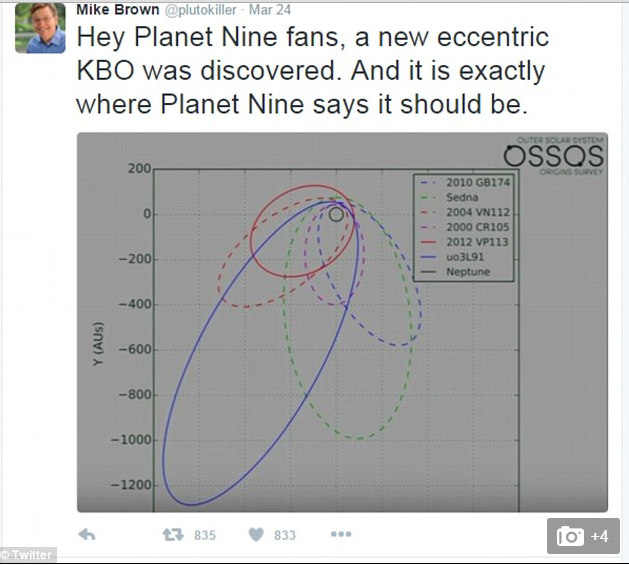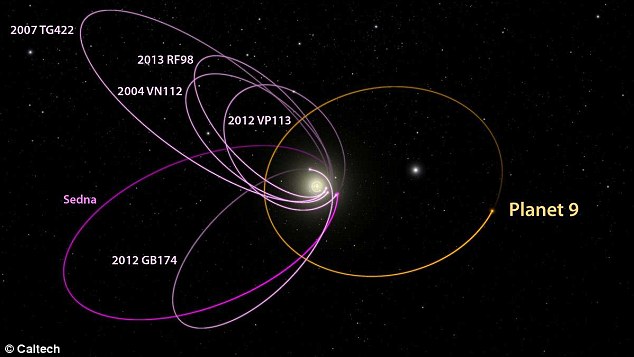Whitmire’s original work was published in the journal Nature in 1985, while working as an astrophysicist at the University of Louisiana at Lafayette. His work was again featured in an issue of Time Magazine in 1985. It was titled, “Did Comets Kill the Dinosaurs? A Bold New Theory About Mass Extinctions.”
Whitemire and Matese’s theory is that as Planet X orbits the sun, its tilted orbit slowly rotates and Planet X passes through the Kuiper belt of comets every 27 million years, knocking comets into the inner solar system. The dislodged comets not only smash into the Earth, they also disintegrate in the inner solar system as they get nearer to the sun, reducing the amount of sunlight that reaches the Earth.
In 1985, a look at the paleontological record supported the idea of regular comet showers dating back 250 million years. Newer research shows evidence of such events dating as far back as 500 million years.
Whitmire and Matese published their own estimate on the size and orbit of Planet X in their original study. They believed it would be between one and five times the mass of Earth, and about 100 times more distant from the sun, much smaller numbers than Caltech’s estimates.
Whitmire has been following his research for the past thirty years, and would like to write a book on it, if there’s ever a final answer. Meanwhile, he’s convinced that a distant planet may have had a significant influence on life on Earth.
Researchers at Caltech support the claim of a ninth planet:
Caltech researchers have found evidence of a giant planet tracing a bizarre, highly elongated orbit in the outer solar system. The object, which the researchers have nicknamed Planet Nine, has a mass about 10 times that of Earth and orbits about 20 times farther from the sun on average than does Neptune (which orbits the sun at an average distance of 2.8 billion miles). In fact, it would take this new planet between 10,000 and 20,000 years to make just one full orbit around the sun.The researchers, Konstantin Batygin and Mike Brown, discovered the planet’s existence through mathematical modeling and computer simulations but have not yet observed the object directly.
“This would be a real ninth planet,” says Brown, the Richard and Barbara Rosenberg Professor of Planetary Astronomy. “There have only been two true planets discovered since ancient times, and this would be a third. It’s a pretty substantial chunk of our solar system that’s still out there to be found, which is pretty exciting.”
Brown notes that the putative ninth planet—at 5,000 times the mass of Pluto—is sufficiently large that there should be no debate about whether it is a true planet. Unlike the class of smaller objects now known as dwarf planets, Planet Nine gravitationally dominates its neighborhood of the solar system. In fact, it dominates a region larger than any of the other known planets—a fact that Brown says makes it “the most planet-y of the planets in the whole solar system.”
Source: phys.org
Source: caltech.edu



Great I don’t have to die alone!
I knew all the degrees you have and i’m a idiot
Your stupid
IF YOU LIKE SCIENCE AND TECH , THIS IS A GOOD ARTICLE .